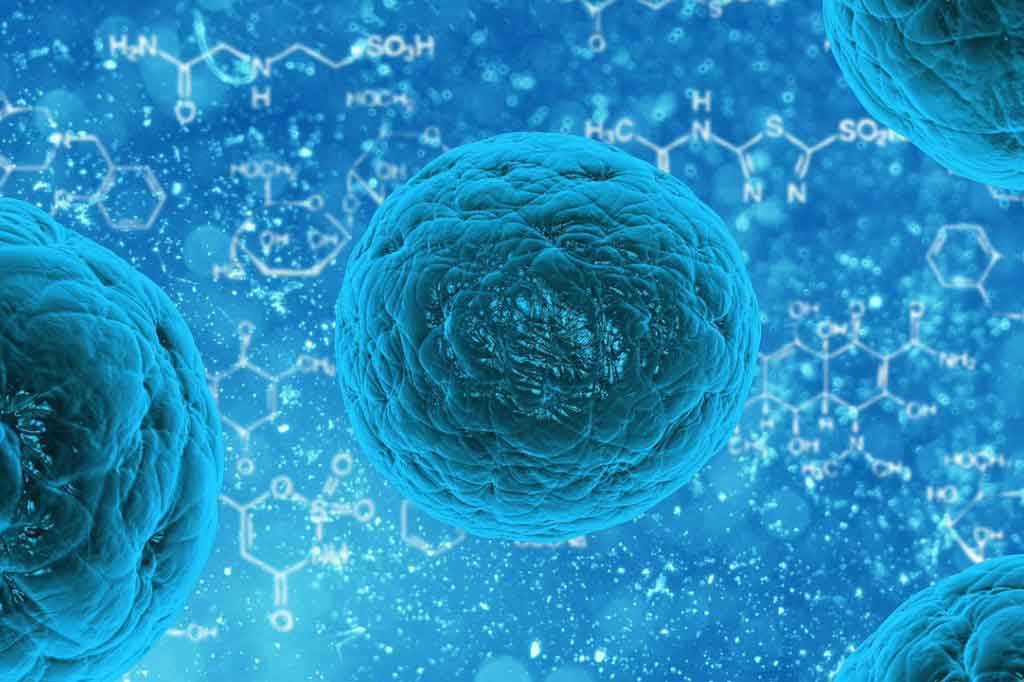'Kids grow out of autism' claim unfounded
Genetics and stem cells
Can some children simply “grow out” of autism? The Daily Mail certainly thinks so, and today reported that new research by a “prestigious American university” claims that “not only is this possible, it’s also common”...
Can some children simply “grow out” of autism? The Daily Mail certainly thinks so, and today reported that new research by a “prestigious American university” claims that “not only is this possible, it’s also common.”
The Mail’s claim is misleading and may offer a false impression to the parents of children with autism. It centres on a piece of research which looked at a completely different aspect of autism. The study assessed how the presence of other developmental conditions related to the diagnosis of autism. To do this, researchers looked at parent survey data relating to children with a current diagnosis of autism and children who had previously been diagnosed but no longer met criteria for diagnosis. It generally found that children with a current diagnosis of autistic spectrum disorder (ASD) were more likely to also have certain other conditions than those who no longer met the diagnostic criteria.
Diagnosing ASD is challenging, especially since the condition is often accompanied by other developmental disorders. Specialists also recognise that children who once met diagnostic criteria for an ASD may no longer do so at a later point, possibly because of care and management or because of an initial misdiagnosis. However, this study only suggests that conditions which occur at the same time may complicate the diagnosis of ASD, and does not support the claim that many children will simply “grow out of it”.
Where did the story come from?
The study was carried out by researchers from the Johns Hopkins Bloomberg School of Public Health, Maryland, and Massachusetts General Hospital for Children. There is no information about external funding. The study was published in the peer-reviewed medical journal Pediatrics.
The Daily Mail’s report misleadingly linked the study with the case of a boy who was diagnosed with severe autism at the age of three but who, according to the paper, had undergone a “transformation by the age of nine”. While the article described improvements in the boy’s symptoms, it did not reveal whether the child has a current diagnosis of autism.
The newspaper said that, according to the study, this type of transformation is “far from unique”, and that 453 of the 1,366 sets of parents questioned during the study said their children had “grown out of” a previous diagnosis of ASD. It also quoted one of the study’s authors as saying “there’s a lot of moldability of the developing brain.”
Despite suggestions otherwise, the study did not look at whether children grow out of the condition. Instead, it looked at how common other developmental and psychological problems are among children with an ongoing diagnosis of ASD. It then compared these children with autism to children who reportedly had one of these developmental or psychological conditions in the past but who were no longer considered to have one.
The Mail did report the opinion of independent experts at the end of its story.
What kind of research was this?
The authors say previous studies have shown that children with ASDs have higher rates of co-occurring developmental and psychiatric conditions, compared with children who show typical development. For children diagnosed with ASD, different co-occurring conditions are found in different age groups. For example, children and adolescents with an ASD have shown higher rates of learning disability, while adolescents and adults with ASD are frequently diagnosed with co-occurring depression.
The authors also point out that the stability of a diagnosis of ASD can vary over time. The 2007 US National Survey of Children’s Health (NSCH) showed that 40% of children aged 3–17 who had been diagnosed with ASD at any point were no longer considered to have a diagnosis when their parents later completed a survey on their symptoms.
Differentiating between autistic spectrum disorders and other co-occurring neurodevelopmental disorders (such as ADHD and learning disabilities) and psychiatric conditions can be challenging for doctors. This can lead to confusion with diagnoses, which can delay appropriate diagnosis and lead to missed opportunities for effective interventions, say the authors.
Their cross-sectional study examined the cases of 1,366 children whose parents reported an ASD diagnosis when they completed the 2007 NSCH. This group included children with a current diagnosis and children who had a diagnosis in the past but did not currently have one. The researchers investigated the extent to which commonly co-occurring developmental, psychiatric and behavioural conditions differentiate children with a current ASD diagnosis from children who no longer met the criteria for diagnosis.
What did the research involve?
The authors obtained cross-sectional data on 1,366 children who had a parent-reported diagnosis of ASD (current, or past but not current) from a US national survey of children, the NSCH. The data were collected from parents by phone interview between 2007 and 2008. Households with at least one child between the ages of 0 and 17 were eligible to participate. The survey included questions about the child’s physical and mental health and any medical diagnoses. The 2007 data comprised 91,642 completed surveys.
For this study, researchers focussed on parents’ responses to questions about whether they had ever been told by a doctor or other healthcare provider that their child had a form of ASD and whether the diagnosis was current. They then created two study groups based on their responses: parents who reported a current ASD diagnosis and those who reported a past diagnosis.
For the purposes of their analyses, they then spilt the children into three developmental stages: young children (3-5 years), children (6-11 years) and adolescents (12-17 years).
The final data set used in the study included details of 1,366 children:
- 154 young children, 373 children and 386 adolescents were reported to have a current ASD diagnosis
- 53 young children, 189 children and 211 adolescents were reported as having a former ASD diagnosis
Those who reported a past diagnosis made up 33.2% of the study sample.
The researchers looked at whether children in the two groups were also reported as having co-occurring conditions, including ADHD, learning disability, developmental delay, speech problems, hearing problems, anxiety, depression, behavioural problems and seizures/epilepsy. They divided responses into the following categories: a past diagnosis, current mild diagnosis, current moderate or severe diagnosis, and never diagnosed.
They analysed the data using standard statistical methods and took account of factors such as sex, race, education, income and whether the child had a current “individualised education plan” (IEP).
What were the basic results?
The researchers found that, after they adjusted for sociodemographic factors, children whose parents reported a current diagnosis of ASD were more likely to have co-occurring conditions than those who no longer met diagnostic criteria for an ASD (those who had a past diagnosis).
- Young children with a current ASD diagnosis were 11 times more likely to have current moderate/severe learning disability, and over 9 times more likely to have current moderate/severe developmental delay than those with a past diagnosis.
- Children with a current ASD diagnosis were 3.85 times more likely to have past speech problems, and 3.51 times more likely to have current moderate/severe anxiety than those with a past diagnosis (but less likely to have a past hearing problem).
- Adolescents with a current ASD diagnosis were 3.91 times more likely to have a current moderate/severe speech problem, and 10.48 times more likely to have current mild epilepsy than those with a past diagnosis (but less likely to have a past hearing problem).
How did the researchers interpret the results?
According to the researchers, their findings suggest that the presence of co-occurring psychiatric and neurodevelopmental conditions is associated with a change in ASD diagnosis, although the mechanisms that underlie this change are unclear.
They point out that core features of ASDs, such as communication problems, are often similar to the signs of conditions that commonly occur alongside ASDs. They say it is possible that a child may have been diagnosed with ASD because of the presence of common co-occurring conditions, but may later be reclassified as not having ASD. There may be many reasons for this, including developmental improvements or because a child no longer meets the diagnostic criteria as a result of early interventions to support their development.
Conclusion
Contrary to what readers of the Daily Mail’s article might think, this study did not look at whether children “grow out” of autism, nor does it support suggestions that they do. Instead, this research looked at the relationship between diagnoses of autism and the presence of other developmental conditions with similar, and sometimes overlapping, symptoms. Interpretations from this study should be made with care. It cannot tell us how the course of autistic spectrum disorder (ASD) may progress over time or whether it is possible to grow out of ASD.
Though the study found some significant associations, and children with a current ASD diagnosis were more likely than children with a past diagnosis to have certain co-occurring conditions, these results need corroboration. While certain associations were significant, the risk figures tended have very wide confidence intervals (a type of measure used in statistical analyses to express the precision of an estimate). For example, the study found that young children with current ASD were nine times more likely to have current moderate or severe developmental delay. However, the confidence intervals around this result suggest that the association was likely to be anywhere between 1.9 and 44.4 times more likely. With such wide confidence intervals, we can have less confidence in the reliability of the calculated association.
Another important limitation of the study is its reliance on parents to self-report their children’s diagnoses through interviews carried out on the phone, which introduces the possibility of error.
Diagnosing an ASD is challenging, especially since the condition is often accompanied by other neurodevelopmental disorders with overlapping symptoms. Specialists also recognise that children who once met diagnostic criteria for an ASD may no longer do so at a later point, possibly because of care and management or because they were misdiagnosed initially.
The findings of this study are certainly of interest and indicate that other developmental, behavioural or psychiatric conditions occur among children with ASD. However, the study mainly highlights that the presence of other conditions is likely to make diagnosing ASD complicated, as experts already recognise.






 Subscribe
Subscribe Ask the doctor
Ask the doctor Rate this article
Rate this article Find products
Find products







